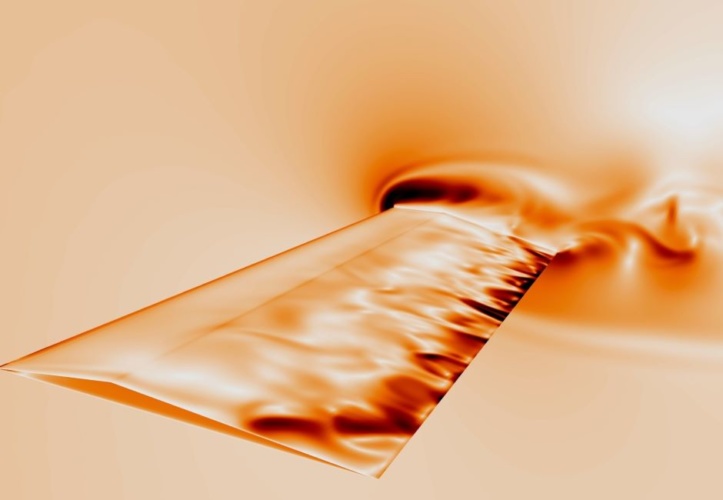
Following the success of NASA’s Ingenuity Mars Helicopter, engineers are looking to create more optimised helicopters that can fly longer distances at higher altitudes, with heavier payloads.
The ambition is unambiguous, but conditions on Mars are challenging. NASA says flights on Mars were prepared for atmospheric densities between 0.0145 and 0.0185kg/m3 (equivalent to 1.2-1.5 per cent of Earth's atmospheric density) but that could drop to as low as 0.012kg/m3. Drops in density lead to a drop in thrust margin, which can be compensated for with faster rotor speed. Ingenuity, and platforms that follow, must avoid rotor speeds approaching the speed of sound because that would cause drag. This combination of atmospheric density and slower speed of sound means that simple modelling strategies do not yield accurate results.
To overcome this, engineers at Imperial College London have created a ‘virtual wind tunnel’ simulator that recreates Mars’ atmospheric conditions to test helicopter blade designs.
“We are combining the virtual wind tunnel capability with Genetic Algorithms to develop optimised airfoils for Martian rotorcraft,” said Professor Peter Vincent from Imperial’s Department of Aeronautics.
By comparing their results with those from the real-life Mars Wind Tunnel in Tohoku University, Japan, they found that their simulations recreated true Martian conditions with a much higher degree of accuracy than has previously been possible. Imperial’s in-house high-fidelity solver - PyFR, - directly simulated the governing equations of motion on Mars and has undertaken high-order direct numerical simulations of flow over a triangular airfoil at Mach 0.15 and Reynolds number of 3000. The team’s findings are detailed in AIAA Journal.
Wind tunnel experiments are well established but have flaws; in this instance mounting rotating blades in close proximity to tunnel walls that do not exist for a real helicopter blade. Physical testing is time-consuming and costly, and Prof Vincent added that simulation gives researchers access to all the flow field at any point in time, allowing for detailed analysis of flow physics.
Vortices generated by the triangular airfoil. The unsteady nature of the flow is apparent (Imperial College London via GIPHY)
According to Imperial, the team gradually increased the realism of their simulations. They showed that only when the full span of the blade plus the wind tunnel walls were fully simulated did the results come close to the Tohoku experiments, where researchers measured lift, drag, and pressure distributions over the surface of a triangular airfoil.
Furthermore, simulations at Imperial predicted a significant change in the behaviour of the blade with angle-of-attack; at a particular incidence the lift mechanism of the blade changes suddenly with the formation of a large vortex that acts to suck on the top surface of the blade, which increased its lift.
The team has run its simulations on supercomputers and has recently been awarded a large compute resource allocation on the UK's biggest GPU enabled supercomputer (Cirrus at EPCC) to work on designs for a next generation Mars helicopter.










Guest blog: exploring opportunities for hydrogen combustion engines
"We wouldn't need to pillage the environment for the rare metals for batteries, magnets, or catalisers". Batteries don't use rare...